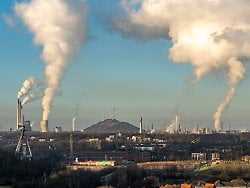Green sources feed 17 percent
The energy turnaround is a long way off worldwide
2/11/2022, 5:49 p.m
Not only Germany lags behind in the development of renewable energies. Crude oil, coal and natural gas are very popular around the world. According to a study, they cover 83 percent of the energy requirement. However, there are some bright spots.
For the time being, the world’s hunger for energy will continue to be largely satisfied from fossil sources – but renewables are slowly gaining ground, also in view of the rise in raw material costs. This is a core result of a study by the Federal Institute for Geosciences and Natural Resources (BGR). In the analysis presented, the agency, which advises the federal government on strategic and supply issues, determined that oil, coal and natural gas accounted for 83 percent of global primary energy consumption.
The data status relates to the end of 2020. In the case of coal, production fell. China in particular, which is building many new coal-fired power plants, has pulled a lot out of the ground. However, the complete picture also includes the fact that almost all countries are specifically promoting the expansion of renewable energy sources such as wind, solar, water or biomass, added the BGR. The added capacity of 261 gigawatts was greater in 2020 than ever before. China accounted for around 45 percent of the expansion.
With a view to the climate targets, however, there was a problem in Germany when it came to expanding wind and solar systems and expanding the grid. In addition, the question arises as to how the fluctuating renewables are to cover the increasing demand for electricity when coal and nuclear power are no longer available. This requires more modern gas-fired power plants, new storage technology using hydrogen and additional electricity purchases from abroad. This is also reflected in the consumption calculation in Germany for 2020: “Based on a high import rate of 64 percent, fossil fuels covered more than 80 percent of primary energy consumption,” explained BGR researcher Rüdiger Lutz.
Hydrogen is an expensive beacon of hope
Due to the economic slump in the first Corona phase, global energy consumption fell by over 4 percent in 2020 and CO2 emissions by 7 percent. The authorities estimate that this is a temporary effect. “With the recovery, the demand for energy has increased again since 2021. The consequences are sometimes sharp price increases in Europe – around sixfold for natural gas.” BGR boss Ralph Watzel emphasized: “The current situation shows that the conversion of the energy systems still requires great effort in order to achieve the climate targets.”
A mega project is the construction of a hydrogen infrastructure in order to be able to use the chemical element as a fuel and, above all, as a storage medium on a large scale with as little CO2 as possible. However, the necessary investments are enormous, and hydrogen itself must first be separated from compounds such as water, which is energy-intensive. The BGR also believes here: “Despite the efforts to produce hydrogen regionally, there will be a high need for imports in the foreseeable future.”
